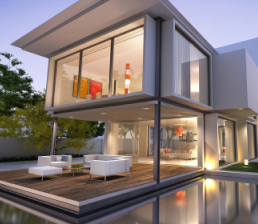Sustainable Structures: Eco-Friendly Building Techniques
Sustainable Structures: Eco-Friendly Building Techniques
Energy-efficient construction is becoming increasingly important for homeowners looking to reduce their environmental impact and save on utility bills. Not only does it contribute to a healthier planet, but it also enhances the comfort and value of your home. In a place like Fort Lauderdale, Florida, where temperatures can get quite high, energy-efficient homes can significantly impact daily living.
Understanding how energy-efficient construction works and what features to look for can help you make informed choices when planning your next home project. Investing in innovative materials and implementing smart technology can lead to substantial savings and a more sustainable lifestyle. These improvements can also increase the market value of your property, making it a wise financial decision.
Focusing on energy efficiency can create a home that is not only comfortable but also environmentally responsible. With that in mind, let’s delve into the many benefits of energy-efficient construction, key features to look for, innovative materials that boost efficiency, and how you can integrate smart technology into your home.
Key Benefits of Proper Home Ventilation
Proper home ventilation offers several significant benefits that are essential for maintaining a healthy and comfortable living environment. One of the main advantages is improved air quality. By regularly exchanging indoor air with fresh outdoor air, ventilation systems help remove pollutants, allergens, and excess moisture from your home. This process reduces the concentration of harmful substances like dust, mold spores, and volatile organic compounds (VOCs), which can negatively impact your health.
Another important benefit is the control of humidity levels. In humid climates like Fort Lauderdale, high moisture levels can lead to mold growth, which can damage your home’s structure and harm your health. Proper ventilation helps manage humidity by removing excess moisture, preventing mold and mildew from forming.
This proactive approach keeps your living spaces dry and comfortable, reducing the risk of allergic reactions and respiratory issues. Additionally, well-ventilated homes tend to smell fresher as ventilation helps to eliminate musty odors.
Common Types of Home Ventilation Systems
There are several types of home ventilation systems that you can consider to improve the air quality and comfort of your living spaces. The most common types include natural ventilation, mechanical ventilation, and hybrid systems. Each type has its benefits and can be tailored to match the specific needs of your home.
Natural ventilation relies on the strategic placement of windows, doors, and vents to facilitate airflow. This system works best in areas with a mild climate where outdoor air quality is relatively good. By simply opening windows and using vent structures, you can let fresh air in and stale air out, creating a naturally airy environment.
Mechanical ventilation systems are more controlled and involve the use of fans, ducts, and vents to move air in and out of your home. Examples of mechanical systems include exhaust fans, supply fans, and balanced systems that incorporate both. Mechanical ventilation is especially useful in homes with high insulation levels, where natural airflow is limited. It ensures consistent air exchange, improving indoor air quality and maintaining comfortable humidity levels.
Hybrid systems combine elements of both natural and mechanical ventilation. These systems optimize airflow by using natural methods when conditions are favorable and supplementing with mechanical means when necessary. This flexibility makes hybrid systems highly efficient and adaptable to varying weather conditions, providing a balanced and effective approach to home ventilation.
Signs Your Home May Need Better Ventilation
Detecting issues with your home’s ventilation is crucial for maintaining a healthy living space. One noticeable sign of poor ventilation is a consistent, musty odor, especially in basements or other enclosed areas.
This smell often indicates the presence of mold or mildew, which can thrive in damp, poorly ventilated environments. Excessive condensation on windows and walls is another red flag. When moisture can’t escape, it condenses on colder surfaces, leading to potential water damage and mold growth.
Another sign is uneven temperatures throughout the home. If certain rooms feel stuffy and warm while others are cool, this could indicate that air isn’t circulating properly. Increased dust accumulation is also a common indicator.
When your ventilation system isn’t efficient, dust and allergens settle on surfaces more easily, contributing to poor indoor air quality. Residents may start experiencing more frequent allergy symptoms or respiratory issues, signaling a need for improved airflow.
Tips for Improving Ventilation in Your Home
Enhancing your home’s ventilation doesn’t have to be complicated. Start with simple steps like opening windows and doors whenever possible to allow fresh air to circulate. Use exhaust fans in high-humidity areas such as kitchens and bathrooms to expel moist air outside. These fans help prevent moisture buildup that can lead to mold and mildew, keeping the air cleaner and reducing humidity levels.
Another effective strategy is to install and maintain mechanical ventilation systems. Whole-house ventilation systems, such as heat recovery ventilators (HRVs) or energy recovery ventilators (ERVs), can ensure a consistent exchange of indoor and outdoor air. These systems are essential for homes with high insulation where natural airflow is limited.
Additionally, consider adding ceiling fans to help circulate air more effectively. Regularly cleaning air ducts and replacing filters in your HVAC system can also make a significant difference in improving air flow and quality.
Sustainable Living: Implement Energy-Saving Construction Techniques
Proper home ventilation is an essential aspect of maintaining a healthy and comfortable living environment. From improving air quality to managing humidity levels, effective ventilation systems offer numerous benefits for your home and health. Recognizing the signs of poor ventilation and taking steps to enhance airflow can ensure a safer and more pleasant home atmosphere.
Improving your home’s ventilation might seem daunting, but with the right guidance and solutions, you can achieve significant improvements. For professional help in optimizing your home’s ventilation, contact A.N.O Quality Construction.
Our expertise in energy-efficient and holistic home construction ensures that we meet all your ventilation needs efficiently. Reach out to our construction company in Fort Lauderdale, FL, to create a healthier home environment for you and your family!
Recent Comments
RECENT POSTS
#HELLIX








